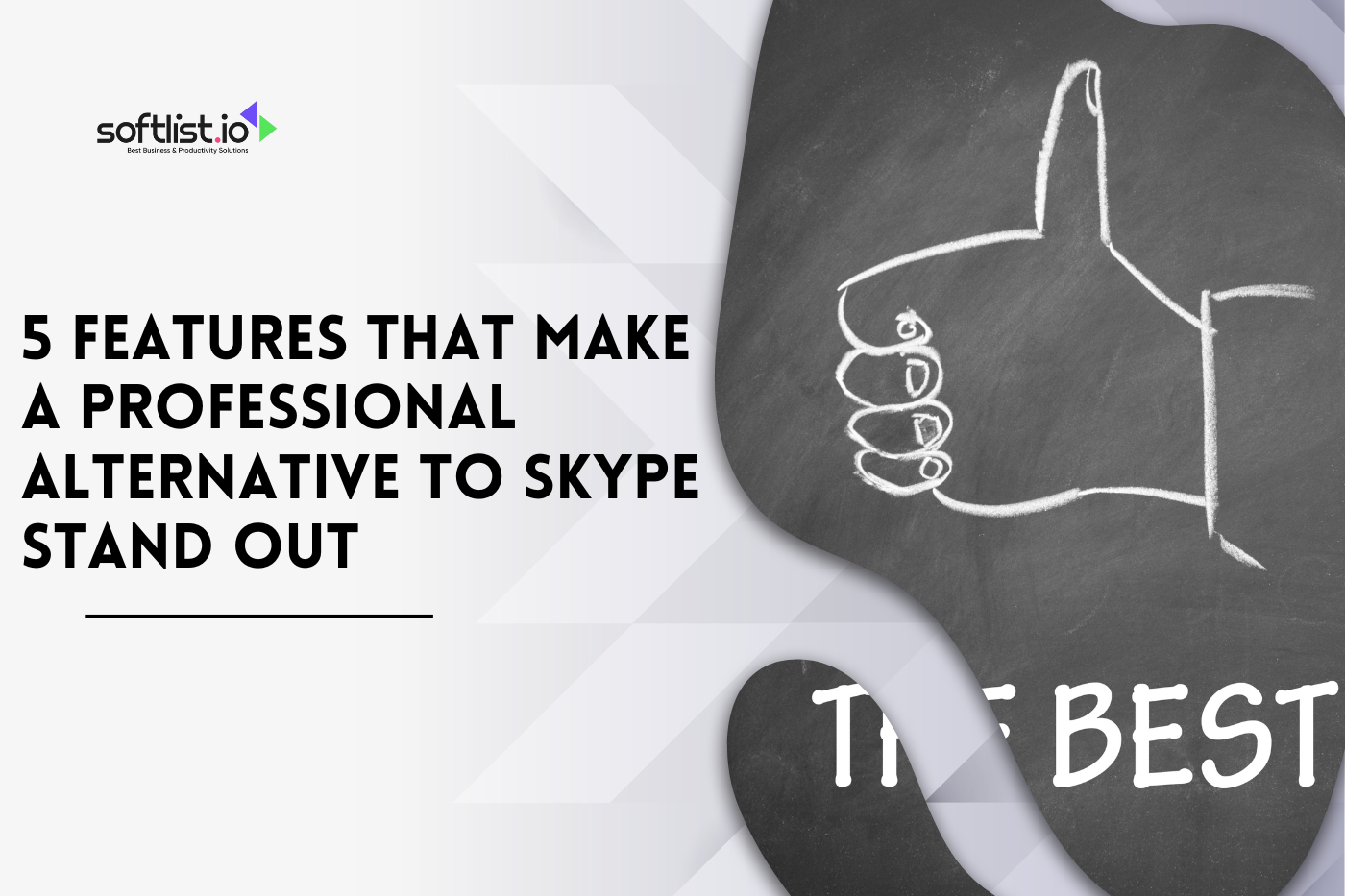Chatbots have transformed the way businesses and individuals interact with technology, making conversations more efficient and engaging. With advancements in AI and natural language processing, these tools are becoming smarter, offering personalized interactions and automating various tasks.
Many platforms, including Jasper AI and versions of ChatGPT, provide intelligent assistance, helping users streamline workflows and enhance customer engagement. These AI-driven solutions are designed to handle complex conversations, making them invaluable for businesses, content creators, and customer support teams.
Unlike other chatbots, AI-driven chat solutions today provide more dynamic and adaptive responses, enhancing user experience across various industries. If you’re looking to integrate an AI-powered chat tool into your business or personal projects, this guide will help you explore the top chatbot AI tools, their features, and how to choose the right one.
Keep reading to discover which chatbot solution best fits your needs!
Key Takeaways
- With advancements in advanced AI, businesses are increasingly using the chatbot to streamline customer interactions, improve efficiency, and enhance user experiences across various platforms.
- When selecting the right chatbot solution, it’s crucial to compare leading platforms and evaluate their features like natural language processing, automation, and integration capabilities to meet business needs.
- AI-powered chatbots are transforming how businesses promote their products and services, offering personalized engagement, real-time support, and seamless automation to drive customer satisfaction and growth.
What are AI Chatbots and How Do They Work?

Source: Canva Premium
ChatGPT is a prime example of a sophisticated language model that powers AI chatbots. These chatbots, designed to mimic human conversation, leverage machine learning algorithms, including natural language processing (NLP), to learn and evolve.
The guide to building an AI chatbot usually involves integrating an API, which enables the chatbot to process real-time queries from users. As users interact with the chatbot, it gains experience, refining its responses to be more accurate and personalized. This process of continuous learning is pivotal to its use cases in various domains, like websites, messaging apps, and customer service centers.
The core objective is to enhance the user experience by offering prompt assistance. With advancements in AI technology, these AI chatbots, like ChatGPT, are becoming more adept and human-like in their communication, revolutionizing how companies engage with their clients.
Choosing the Right Platform and Tools
Chatbots are essential to customer service, sales, and digital marketing in today’s digital age. But there are so many websites and tools to choose from. How do you know which one to use?
We’ll talk in detail about three of the most popular chatbot platforms in this part. We’ll show you some of the best tools and programs for making robots. If you know these things, you’ll be one step closer to ensuring that people using your robot have a good time with it.
3 Popular Chatbot Platforms
1. Dialogflow (by Google)
- Dialogflow is a cloud-based platform that allows users to create voice and text-based chatbots. With natural language processing (NLP) capabilities, it helps bots understand and respond to user inquiries more effectively.
- Pros:
- Supports multiple languages and platforms.
- Built-in machine learning tools for continuous improvement.
- Extensive documentation and community support.
- Cons:
- May require some learning curve for beginners.
- Integration complexities with specific platforms.
- Some advanced features may come at a cost.
2. Microsoft Bot Framework
- Microsoft’s offering in the chatbot space, this comprehensive tool allows users to build, test, and deploy chatbots across various platforms.
- Pros:
- Seamless integration with Microsoft products like Azure.
- It provides robust debugging and testing tools.
- It supports a wide variety of SDKs, including .NET, Node.js, and Python.
- Cons:
- It can be overwhelming for new users.
- Pricing can get high for large-scale applications.
- We may need to manage separate Azure services.
3. ManyChat
- ManyChat is predominantly designed for Facebook Messenger marketing. It helps businesses engage with their Facebook audience effectively through automated chat sequences.
- Pros:
- User-friendly interface, perfect for beginners.
- It Has a free version with basic features.
- Can create interactive and engaging chat sequences.
- Cons:
- Limited primarily to Facebook Messenger.
- Some advanced features are behind a paywall.
- There needs to be more flexibility for more complex chatbot functionalities.
Essential Tools and Software for Chatbot Development
- Design and Wireframing Tools: Tools like Balsamiq and Mockplus help in the initial design phase. It creates a clear blueprint of how the chatbot will function and interact.
- NLP Tools: Libraries and platforms like NLTK and spaCy are essential for understanding user inputs and crafting relevant responses.
- Integration Tools: Zapier and Integromat can help integrate your chatbot with other software and platforms. It allows communication with CRM systems, databases, or even email platforms.
- Analytics and Monitoring: Understand your chatbot’s performance with tools like Botanalytics and Chatbase, which offer insights into user interactions, bottlenecks, and more.
- Database Management: If your chatbot requires user data storage, tools like Firebase or MongoDB can be helpful.
Understanding AI and Machine Learning Like ChatGPT

Source: Canva Premium
Artificial intelligence (AI) is a new field that lets robots learn, reason, and solve problems like people. The AI Machine Learning (ML) field enables robots to remember data without being programmed. ML systems can see trends, make predictions, and change by looking at a lot of data.
Change is tied to learning, and people become more competent as they gain more knowledge. AI and ML can be utilized to build virtual helpers and engines that make suggestions. As these tools become more essential to us daily, we must know how they work. They change how businesses work and make it possible for things to happen that sound like science fiction.
Planning Your Chatbot Design: Step-by-step Guide
Chatbots have become very famous and are now used as virtual assistants. They even serve as customer service reps and even therapists. But making a robot that is both useful and interesting takes some planning. These tips will help you plan the design of your chatbot for the best results.
Defining the Chatbot’s Purpose and Goals
It’s important to know what the primary goal of your robot is before you start designing it. Do you want it to help customers with frequently asked questions? Walk people through the process of making a purchase, or entertain them? Clear goals speed up the planning process and enable you to determine how well the bot works. “Cut customer service wait times by 50%” or “Increase sales of product X through chatbot interactions” are clear goals.
Identifying Target Audience and User Personas
Knowing who you’re making it for is vital to any successful job. Dig deep into the habits, interests, and points of the people you want to reach. Are they young people who know much about technology and want quick answers, or are they older people who might need more help? Making user profiles can be very helpful in this case. For example, “John, a 28-year-old tech fan who loves quick and easy self-service,” can tell the robot how to sound, what to say, and how hard things are. Your chatbot’s personality and functionality should fit your users’ personas. It develops better engagement and satisfaction.
Drafting Initial Conversational Flows
Once you know what your chatbot is for and who you want to use it, you can start making the talking flow. The chatbot will take these scripts or paths when interacting with people. Use tools like flowcharts or just a pen and paper to see how the conversations will go.
For example, what should the bot say if a person asks about the price of a product? Where should they go if they ask the bot to help them find customer reviews? By designing these steps, you can make a more organized and efficient chatbot so users can get the information they need without getting frustrated.
Testing and Optimizing Your Chatbot

Source: Canva Premium
It can be exciting to enter the world of robots. Yet, just like with any other digital project, starting something without testing it thoroughly can be a disaster. If you’re about to let the world know about your chatbot, here’s a guide to make sure it’s not just helpful but also great.
Strategies for Beta Testing with Real Users
- Segmented Release: Instead of a big release, choose a series of smaller ones. Choose a group of real users who are typical of the people you want to reach and give them access. It’s like a restaurant’s “soft opening.” Things can go wrong, but the damage is restricted, and the lessons learned are priceless.
- Incentivized Feedback: Offer discounts, freebies, or special access to people to get them to give feedback. The more feedback you get, the more information you have to help you improve.
- Simulated Real-World Scenarios: Give users situations or tasks to ensure they test all of the bot’s features. This proactive method can find bugs that have been hiding.
Analyzing Feedback and Making Iterative Changes
- Prioritize Feedback: All feedback is not created equal. Some might be mere preferences, while others are critical for functionality. Categorize input to tackle the most impactful issues first.
- Iterative Approach: Embrace the power of iteration. Refine your chatbot in phases based on feedback instead of attempting a massive overhaul. This ensures that improvements are manageable and more controlled.
- Stay Engaged: Maintain open communication channels with beta testers, even post-feedback. Their continued insights as the bot evolves can be golden.
Integration with Multiple Channels

Source: Canva Premium
In the digital era, the AI chatbot with ChatGPT API offers a powerful tool for companies to engage with customers. By leveraging GPT and the OpenAI API, businesses can create a chatbot that functions seamlessly across various platforms. Whether it’s through a website, social media, or a messaging app, this chatbot with Python can provide an integrated AI chat experience.
As businesses interact with customers, they can gather insights and learn more about their preferences. With the advancement of technology, it’s crucial for chatbots to deliver a consistent experience across all channels, ensuring businesses remain adaptable, responsive, and customer-centric.
Ensuring Ethical and Responsible AI Deployment
With the rapid rise of AI chatbots in many fields, ensuring they are used ethically and responsibly has never been more critical. When appropriately used, chatbots can change the way people interact with technology. However, if ethics aren’t considered, they can accidentally hurt or mislead people. Here’s how to get around this area safely.
Addressing Privacy Concerns and Data Security
In our data-driven world, it’s very important that the chatbot offers the best privacy and data protection, especially when it comes to personal AI. Users often talk to chatbots, and sometimes, without meaning to, they leave private information behind. To build trust, it’s important for companies to let people know when they’re talking to a robot.
Also, the robot would need to use the latest security measures, follow international rules on data protection, and follow the “less is more” rule when it comes to keeping data. Because cyber threats are always changing, it’s important to review and update these security steps on a regular basis to make sure the chatbot stays a safe place for users to interact.
Making Your Chatbot Inclusive and Bias-Free
Creating an intelligent chatbot, like an AI chatbot, is a meticulous task that requires attention to inclusivity and fairness. When you make your own AI chatbot, it’s crucial to ensure that it serves a broad spectrum of users without any biases. One of the common pitfalls in AI assistant development is unintentionally introducing biases due to limited training data, which might prioritize one user group over another.
Leveraging diverse training data, including various chatGPT prompts, can help in representing different user backgrounds and situations. However, ensuring an unbiased AI doesn’t end upon deployment.
Continuously monitoring user interactions with the chatbot and observing any emerging biases or patterns is crucial. If any biases become apparent, it’s an indication that businesses should retrain their AI models. This vigilant approach ensures that every user is treated equally, maintaining the chatbot’s integrity and fairness.
Best Practices for Ethical Conversations
Chatbots that are designed to talk. Especially when ethics are involved, it’s essential to set a clear end to these talks. Chatbots shouldn’t speak about dangerous or false things. They should only give medical, legal, or other vital information if they can. Clearly defining the chatbot’s area can keep user exchanges safe and valuable.
Adding comments is an excellent example of how to build an ethical robot. This lets users voice their concerns, report answers they don’t like, and find ethical problems. This feedback makes chatbots better. It makes sure that companies handle ethical concerns from customers.
Monitoring and Analytics

Source: Canva Premium
AI chatbots have become very useful for companies as they try to keep up with the digital revolution. Still, as with all technical assets, they can’t reach their full potential. They should be put into use and then closely watched and analyzed for they are required to build. Here’s how to make sure your robot doesn’t just work but does a great job.
Essential Metrics to Measure Chatbot Performance
The efficacy of a chatbot is not just in its existence but in its performance. Key metrics to monitor include:
- User Retention Rate: A measure of how often people return to use your robot. A high rate means people are happy, while a quick drop could indicate a problem.
- Session Length: Find out how long people use your robot on average. Long sessions could tell the user is confused, while short ones could say to the bot or person quitting suddenly.
- Response Success Rate: Track how often your chatbot gives an answer that works or is applicable. If it fails a lot, there are holes in its training data or method.
- Feedback Score: If you have a built-in review system, this will tell you right away how happy users are and where you can make changes.
Tools and Dashboards for In-depth Analysis
Beyond raw metrics, in-depth analysis paints a clearer picture. Utilize tools and dashboards like:
- Cloud-based Chatbase shows how users interact so that bottlenecks and questions can be addressed. These questions that still need to be answered can be found.
- Bot analytics is a tool for analyzing conversations. It shows both good and bad chats.
- Dashbot: This analytics tool gives you data that you can use to enhance user engagement and the flow of conversations.
Continuous Improvement: How Data Drives Better Conversations
Data isn’t just numbers; it’s a treasure trove of insights. By regularly monitoring and analyzing chatbot data, businesses can:
- Refine Conversational Flows: Figure out what questions or problems the robot has trouble with most often. Then you can make its answers better.
- Expand Knowledge Base: Find out what new topics or questions people ask. It allows the bot to change to meet their needs.
- Optimize the user experience using comments and session data to make the user’s journey more accessible and intuitive.
Future Trends and Evolution of AI Chatbot Tools

Source: Canva Premium
The potential of chatbots becomes increasingly evident. With advancements in natural language processing and machine learning, the chatbot provides hyper-personalized interactions, tailoring responses based on user preferences and behaviors. This shift towards an engaging chatbot experience means that these virtual assistants will interact based on users’ unique likes and mannerisms.
Integrating chatbots with Augmented Reality (AR) will revolutionize customer service, delivering real-time virtual assistance. The chatbot would be able to empathize, understand and react to the nuances in text and speech. This ensures the chatbot fosters genuine connections, transcending mere screen interactions.
With the fusion of chatbots and Internet of Things (IoT) devices, the basic chatbot evolves into a more refined tool. As the chatbot becomes more adept, it can help you build more authentic-sounding conversations, bridging the gap between AI and human interaction. For this evolution, a chatbot must be equipped with the required technology and expertise to build these advanced capabilities.
Final Thoughts
As we wrap up our look at AI chatbots, it’s clear that these digital friends are more than just a passing tech trend. They’re here to change how we talk, shop, and seek information. Our step-by-step guide has shown you the way and given you clarity and direction as you explore the fascinating world of artificial intelligence.
But this is not the end of AI. We’ve got you covered if you’re curious and want to know what other AI tools could change your business or everyday life. Explore more of the world of AI with us.
Check out our post about 37 Best AI Writing Tools to learn about other AI tools besides chatbots. Let’s keep exploring and coming up with new ideas together. Cheers to a future that is smarter and more linked!
Visit our blog to learn more about AI Chatbot tools.
FAQs
What Are the Best AI Chatbots Available in 2025?
The best AI chatbots of 2025 include platforms like OpenAI’s ChatGPT Plus, Anthropic’s Claude, and Google’s Gemini. These chatbots are recognized for their advanced features and capabilities in conversational AI.
How Can I Choose the Best AI Chatbot for My Needs?
To choose the best AI chatbot, consider factors such as your specific requirements, the chatbot’s AI features, pricing options, and user reviews. Testing various chatbots through free trials can help you find the best solution for your needs.
Are There Any Free AI Chatbot Options Available?
Yes, there are several free AI chatbot options available, such as some versions of OpenAI’s models and other platforms that offer free tiers. These free AI chatbots allow users to experiment with basic functionalities before committing to a paid solution.
What Is the Best Overall AI Chatbot Currently on the Market?
The best overall AI chatbot is often considered to be OpenAI’s ChatGPT Plus due to its versatility, human-like responses, and advanced capabilities powered by large language models such as GPT-4.
How Do I Test AI Chatbots Before Making a Purchase?
To test AI chatbots, look for platforms that offer a trial period or free tier. This allows you to evaluate the chatbot’s performance, features, and user experience before making a financial commitment.
What Is a Copilot in the Context of AI Chatbots?
A copilot refers to an AI-powered assistant designed to assist users with tasks, provide suggestions, and enhance productivity. For example, Microsoft’s Copilot integrates AI capabilities into various applications to help users navigate tasks more efficiently.
How Does Generative AI Improve Chatbot Interactions?
Generative AI enhances chatbot interactions by allowing them to create human-like responses and engage in more natural conversations. This technology utilizes large language models to understand context and generate relevant replies.
What Are Some Key Features to Look for in Leading AI Chatbots?
When evaluating leading AI chatbots, consider features such as natural language processing capabilities, integration options, ease of use, and the ability to provide personalized responses. Additionally, ensure the chatbot can scale according to your needs.
Can Small Businesses Benefit from Using AI Chatbots?
Yes, small businesses can greatly benefit from using AI chatbots by automating customer support, improving engagement, and providing 24/7 assistance. This can lead to increased efficiency and enhanced customer satisfaction.





